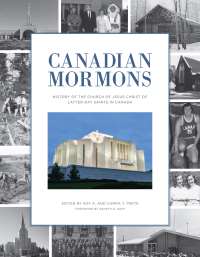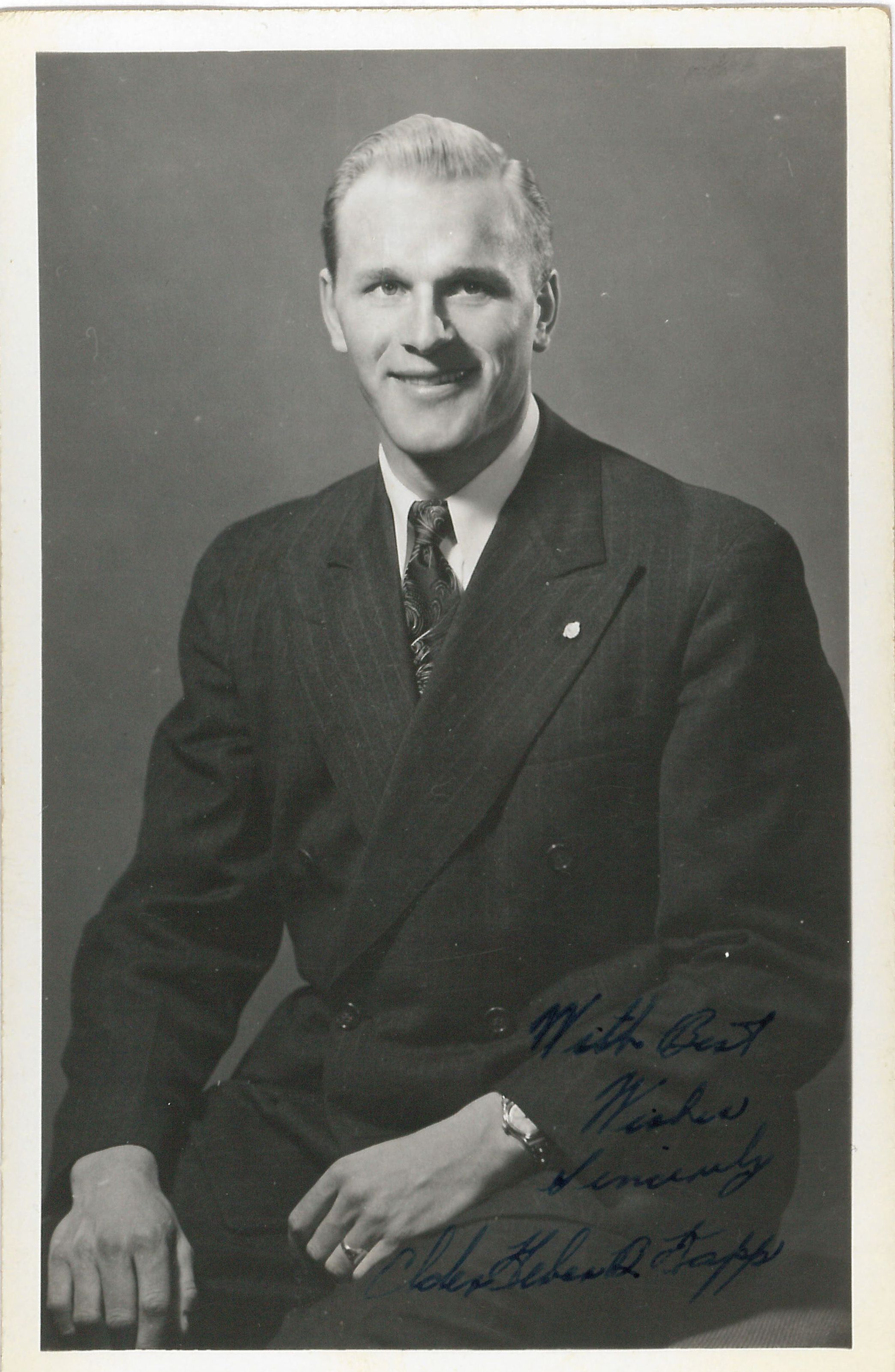Foreword
Ardeth G. Kapp
Ardeth G. Kapp, “Foreword,” in Canadian Mormons: History of the Church of Jesus Christ of Latter-Day Saints in Canada, ed. Roy A. and Carma T. Prete (Provo, UT: Religious Studies Center; Salt Lake City: Deseret Book, 2017), viii-xvi.
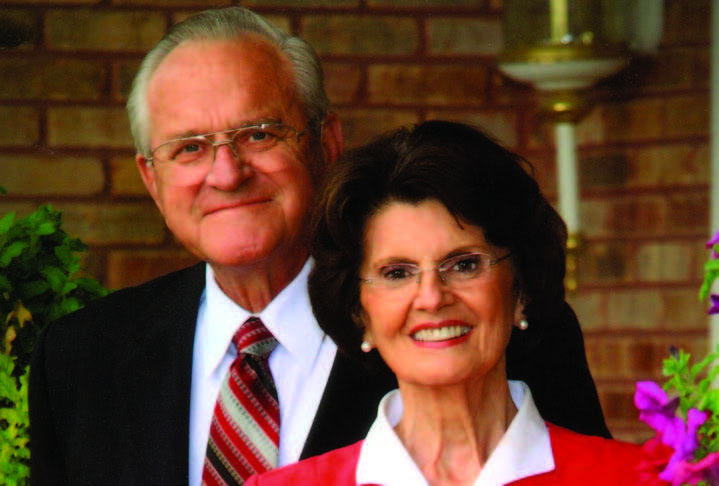
Born in Cardston but immediately moved to Glenwood, Alberta, Ardeth G. Kapp is well known as Young Women General President, 1984–92, during which time she and her board members were inspired to develop the Young Women Personal Progress program based on values and goals leading to the temple (with few changes since that time). She is also known for having served with her husband, Heber, as president of the Canada Vancouver Mission and later the Cardston Alberta Temple. Holder of a BA from the University of Utah and an MA from Brigham Young University, she is the author of sixteen books and a series of television programs for the Utah Network for Instructional Television (UNIT). She was a member of the Brigham Young University faculty and is a popular inspirational lecturer and motivational speaker. (Ardeth Kapp)
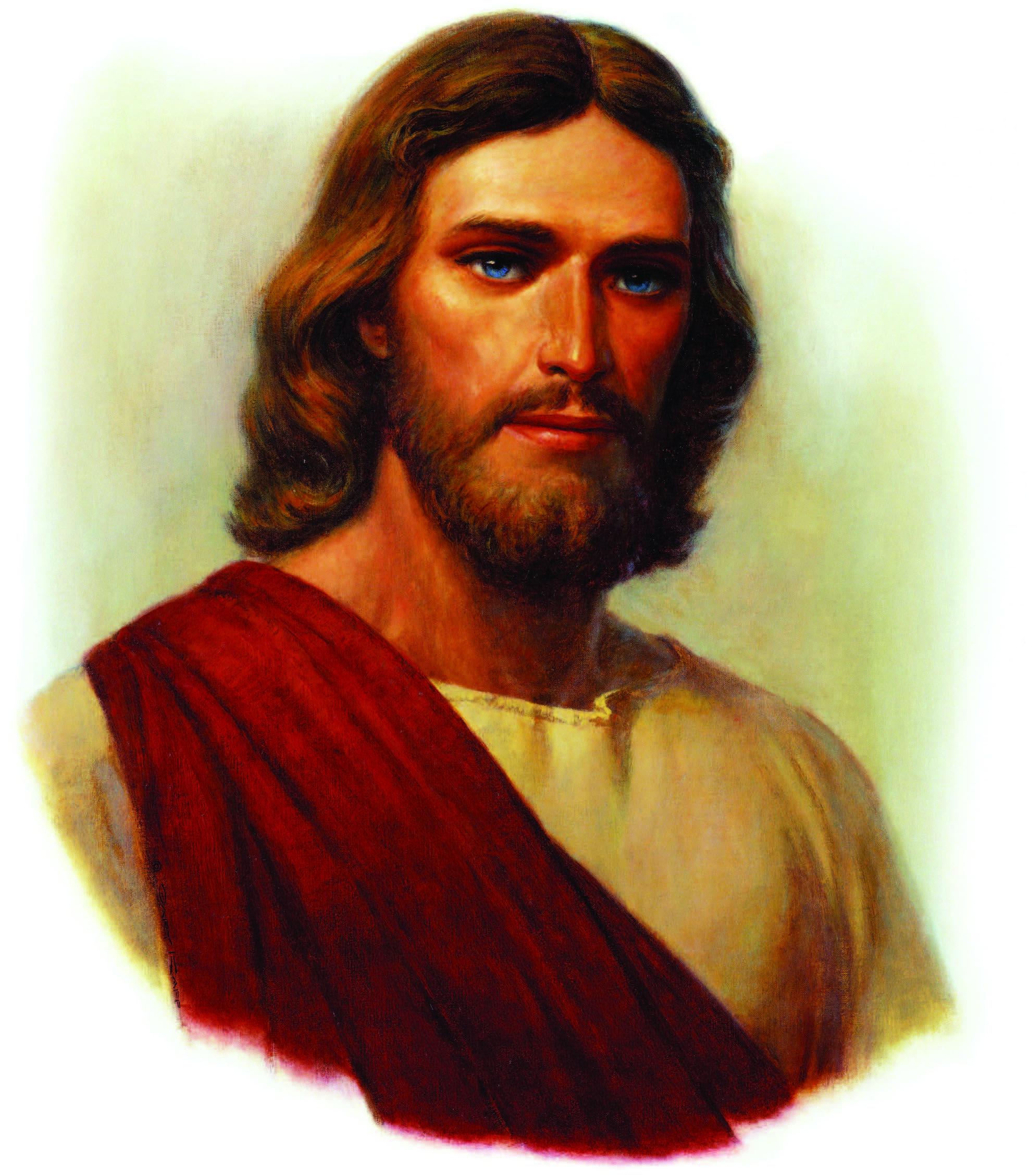 A copy of this painting of Jesus Christ, created by Gary L. Kapp, hangs in the home of Ardeth and Heber Kapp. This is Ardeth's favourite representation of the Saviour because it depicts his kindness and sensitivity. (Gary Kapp)
A copy of this painting of Jesus Christ, created by Gary L. Kapp, hangs in the home of Ardeth and Heber Kapp. This is Ardeth's favourite representation of the Saviour because it depicts his kindness and sensitivity. (Gary Kapp)
I am deeply honoured to be asked to write a foreword for this heirloom book on the history of The Church of Jesus Christ of Latter-day Saints in Canada. This magnificently illustrated volume will be a treasure for many generations to come for those in the Church who wish to understand their Canadian roots. It will also allow those not in the Mormon tradition to have an insider’s view of the great panorama of Mormon history in Canada, written by those who can reflect firsthand on the Mormon experience.
Nearly fifty years have passed since the last general history of this nature was published by the Lethbridge Stake to commemorate the centennial of Canadian Confederation in 1967.[1] At that time, there were nine stakes, just over 50,000 Church members, and one temple in Canada. In 2015, there were forty-eight stakes, nearly 194,000 members, and eight temples, with a ninth temple announced. An updated history is certainly needed. The remarkable team of authors, editors, researchers, oral history interviewers, cartographers, geographers, sociologists, and all others who contributed to this book, under the able direction of editors Roy and Carma Prete, are to be commended for the superb quality of their work. Rarely is a book so readable and so visually appealing while reaching the high standard of academic scholarship required for a peer-reviewed university press.
This book invites insight into the history of the Canadian Mormons. As the pages are turned, consider the invitation to read not only for information but to internalize with appreciation, and even reverence, the sometimes historic events and other seemingly insignificant times that have contributed to the rich tapestry that continues to unfold. While reading with a sense of gratitude for the contribution of the past and with anticipation for the future, may we see ourselves in the present as the link—the bridge that gives meaning, purpose, and a sense of responsibility to those who will one day look back.
The history of The Church of Jesus Christ of Latter-day Saints in Canada falls naturally into three main periods, the first of which involves early preaching in eastern Canada. Given the close proximity of Canada to the United States, it is not surprising that from the early days of the Church, which was organized in Fayette, New York, in 1830, the Church’s history has been intimately connected with Canada. The first organized preaching of the restored gospel outside the United States took place in 1832 in the Kingston area, in what was then Upper Canada (now Ontario). Joseph Smith, the prophet of the Restoration, visited Upper Canada twice. The early preaching of the gospel in eastern Canada yielded a rich harvest, as many as 2,500 converts. Most of these converts did not remain in Canada but immigrated to the United States as part of the gathering, bolstering Church population in the period prior to the western exodus of the main body of the Church from Nauvoo, Illinois, to Utah. John Taylor, a Toronto convert, went on to become the third president of the Church (1877–87). Many other Church and civic leaders came from Canada in that period.
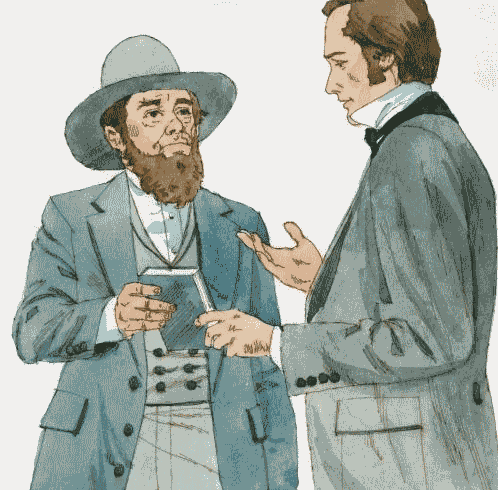 John P. Greene, one of Ardeth G. Kapp's ancestors, is depicted here receiving a copy of the Book of Mormon from Samuel Smith in 1830. Greene became a valiant missionary for the Church, serving in the eastern United States and Canada. (Robert Barrett, Intellectual Reserve, Inc. [hereafter IRI])
John P. Greene, one of Ardeth G. Kapp's ancestors, is depicted here receiving a copy of the Book of Mormon from Samuel Smith in 1830. Greene became a valiant missionary for the Church, serving in the eastern United States and Canada. (Robert Barrett, Intellectual Reserve, Inc. [hereafter IRI])
The second phase began in the spring of 1887, when Charles O. Card, president of the Cache Valley Stake in Logan, Utah, on the advice of President Taylor, who assured him that he would find British justice in Canada, led a small group of forty-one Saints to Cardston (Card’s Town), Alberta.[2] This group, which settled on Lee Creek just 24 kilometres beyond the US border, was the vanguard of several thousand immigrants who would later follow, many to build a massive irrigation canal and settle on irrigated land. The southern Alberta settlement became the “seedbed for the Church” in Canada.
The Latter-day Saint community in southern Alberta was anchored spiritually within a relatively short period of about thirty-five years, when the first temple to be built outside the United States was completed in Cardston in 1923. This historic event influenced the identity of the Church in southern Alberta, providing roots and wings for generations. The decision by Church leaders to build a temple in Canada offered a sense of security and permanence to residents. Though in a “foreign land,” they were here to stay. Gathering to Zion no longer meant joining the communities in Utah; and the decision to build a temple outside the US, along with others that followed later for the benefit of far-flung groupings of Church members, launched the concept of the worldwide Church, which is amply manifest today. The temple in Cardston contributed in important ways to the spiritual growth of members, allowing them to fulfill all the tenets of their beliefs. History records that my paternal grandfather, Daniel Kent Greene, broke the sod for this sacred building. The various events recorded in this book have as much to do with individuals as they do with groups.
The third phase of development occurred when the Church was built up all across Canada mainly through missionary work, beginning for the most part in the early decades of the twentieth century. It was an arduous “bootstrap” operation, in which little branches were developed around one or two faithful convert families or previous move-ins from Alberta, the United States, or Great Britain, whom the Lord seemingly had provided for the establishment of the Church in each area. These small groups often met in rented halls for several years while engaged in numerous fund-raising activities to raise money in order to construct their own meetinghouse. This pattern for the establishment of the Church, repeated in many parts of the country, laid the foundation for the future formation of wards (larger congregations) and stakes (groupings of wards and branches) until, with the multiplication of stakes and the construction of temples, the Church was established in strength across the entire country. The fanning out of southern Albertan members, seasoned in the operation of the gospel, to the major cities of Alberta and other cities in Canada, served to bolster the Church in these areas. With the beginning of proselyting in French-speaking Quebec in the early 1960s and the later development of multicultural wards and branches in the major cities, reflecting the ethnic composition of recent immigrants, the Church in Canada has come to mirror, in a real sense, the various constituent elements of the country.
The historical insights from the book’s authors that cover the unfolding of the entire drama in each of these phases reveal a remarkable tapestry where a common thread contributes to the whole. That common thread reveals attributes of faith, determination, endurance, vision, and purpose as vital ingredients for the growth of the Church in each of the provinces and regions of this great Canadian nation.
My Canadian roots go deep into the fabric of the Church in Canada, and my personal spiritual heritage is connected with every phase of that history. A remarkable theme gleaned from noble progenitors and my own experience has been the power of faith in the restored gospel of Jesus Christ, as revealed to Joseph Smith, to change lives and move people to extraordinary levels of sacrifice and service. Unexpected circumstances, trials and tests, faith and endurance, vision and inspiration, reveal ordinary people living remarkably focused lives. These pages are replete with stories of this kind.
My great-great-grandmother Sarah Sturtevant Leavitt married Jeremiah Leavitt and was living in Hatley, Quebec, Canada, in the 1830s. A traveller who had attended a Mormon gathering gave them a Book of Mormon. Sarah writes of their conversion and the need to gather with the Saints, first in Kirtland and then on to Nauvoo, and later, westward with the Saints. One early morning in 1846, after Jeremiah had gone to obtain some much-needed supplies, a man came with a letter for Sarah containing the news of her husband’s death.
Sarah carried on with faith and courage and proceeded with the Saints to travel to the valley of the Great Salt Lake with nine of her surviving children, two of whom died in Iowa on the way. An entry from her journal writings, drawing on earlier texts and the exalted language of scripture, poetically expresses her feeling: “To write my love of God above it would drain the ocean, though the sea was ink, and the earth paper, and every stick a pen and every man a scribe. When I try to praise Him in beauty, to honour and magnify the name of God, I find I have no language at my command that will do justice to the case, but when I lay aside this weak, frail body I expect to praise Him in the beauty of holiness.”[3] Little did she realize the impact of her dedication and sacrifice.
 Monument in honour of Thomas Rowell Leavitt erected in Santa Clara, Utah. Born in Lower Canada in 1834 and arriving in Utah in 1850, Thomas Rowell Leavitt was a prominent citizen in Utah before he and his family came to Canada. They were among the first settlers in the Cardston area in May 1887. The town of Leavitt, bearing his name, also has a monument in his honour. Many of his children remained in Canada as Canadian citizens. (Ardeth Kapp)
Monument in honour of Thomas Rowell Leavitt erected in Santa Clara, Utah. Born in Lower Canada in 1834 and arriving in Utah in 1850, Thomas Rowell Leavitt was a prominent citizen in Utah before he and his family came to Canada. They were among the first settlers in the Cardston area in May 1887. The town of Leavitt, bearing his name, also has a monument in his honour. Many of his children remained in Canada as Canadian citizens. (Ardeth Kapp)
My ancestors were among the Latter-day Saints who, as pioneers to Canada, emigrated from Utah to Canada in the last years of the nineteenth century. My great-grandfather Thomas Rowell Leavitt, a son of Jeremiah and Sarah Sturtevant Leavitt, brought his family to settle in southern Alberta in 1887. The town of Leavitt, near Cardston, is named after him. Today, the small community of Leavitt has a monument honouring Thomas Rowell Leavitt, highly respected for his impressive leadership in the Church and elsewhere. My grandfather Daniel Kent Greene, a grandson of John P. Greene who was an early missionary in eastern Canada, brought his wife, Adeline Allen, and their family to settle in Aetna (a village near Cardston) in 1898.
These noble ancestors were part of the early pioneers, mostly from Utah, who planted deep roots in Canadian soil. They were challenged to the core as they contemplated the hazards they would face as they began the trek from Utah. There were difficult decisions, including determining what they must make room for in their wagons and—maybe even more difficult—what they would be willing to leave behind, if they were to reach their destination.
My parents, Edwin Kent Greene and Julia Leavitt, were both born in the Cardston area. After their marriage in the newly completed Cardston, Temple in 1924, they made their home in Glenwood, a small Mormon town about 30 kilometres north of Cardston. Growing up in Glenwood, my own faith and testimony of the gospel were shaped by the close integration of family, church, and community in a faith-filled setting, in close proximately to the temple in Cardston with its attendant blessings. There have been a goodly number of General Authorities and leaders called from the southern Alberta community to leadership positions at Church headquarters in Salt Lake City. President Hugh B. Brown and President N. Eldon Tanner were called to be counselors in the First Presidency of the Church in the 1960s. Many others have been called to various leadership responsibilities.
A further example that may appear as a coincidence occurred years ago while I was serving as general president of the Young Women of the Church. I was on assignment in Hong Kong with two General Authorities, Elder Merlin Lybbert, who was the presiding authority, and Elder Lowell Wood. In a small gathering we were asked where we were from originally. We each responded, “Glenwood, Alberta, Canada.” The response was one of great interest and the question followed, “Just how big is Glenwood?” We responded, “Around 250 people.” “Tell us about Glenwood,” came a request. Our mission was not to tell about Glenwood but certainly to share the lessons, the values, and the principles that we had learned during our growing up years in Glenwood, where we were grounded and rooted in the gospel of Jesus Christ.
My story and that of my husband, Heber B. Kapp, are also closely intertwined with the third phase of Canadian LDS development in the twentieth and twenty-first centuries, based on the labours of many, many dedicated missionaries and the efforts of a multitude of faithful Saints, all striving to build up Zion. Serving in the Western Canadian Mission in the late 1940s, Heber spent more than half his mission in Saskatchewan, where he observed how small handfuls of converts, some living in isolated rural areas without meetinghouses or organized branches, fortified only by their testimonies and occasional visits of missionaries, laid the foundation for the establishment and growth of the Church in that province. His mission often seemed a failure to him. While serving as president of the North Saskatchewan District, he organized the Silver Park Branch (near Melfort) and reorganized the Shannon View Sunday School in a remote rural area about 30 kilometres south of Melfort, but he did not baptize anyone, although he did confirm Ione (Prete) Nysetvold, the book editor’s sister. But in that rural pioneer community, three faithful women, the mothers of twenty-nine children, exercised great faith and raised their children in the gospel, with only the sporadic visits of missionaries for many years. From these faithful women sprang a great posterity numbering more than 1,500 in 2015, who had served 175 missions in locations all over the world.[4] Truly, by “small and simple things are great things brought to pass; . . . and by very small means the Lord . . . bringeth about the salvation of many souls” (Alma 37:6–7).
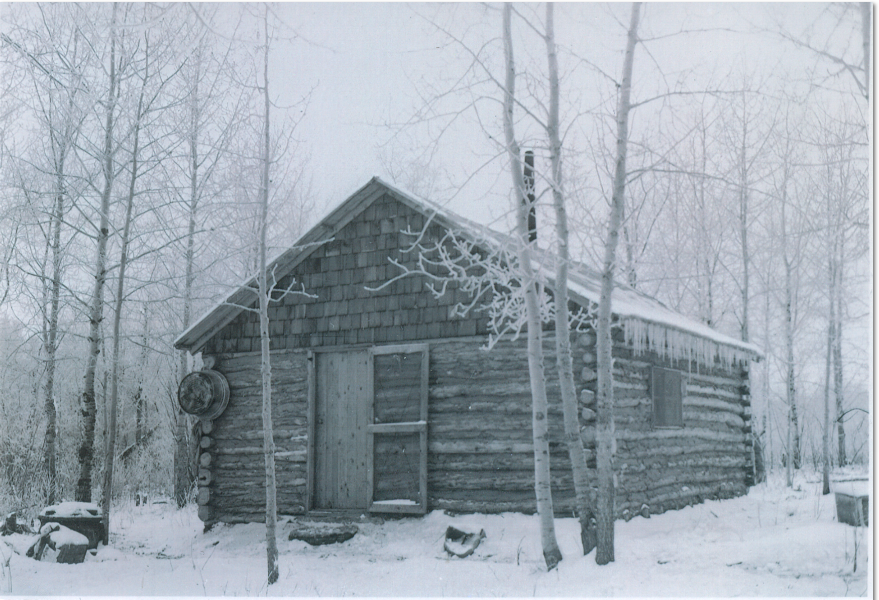 During his mission, Heber Kapp frequently visited Church members in isolated rural areas of Saskatchewan, including Shannon View, where a small group of Saints, in the absence of an organized branch, held Sunday School in homes. This log cabin, which was built by missionaries with the help of local members and friends as a place for the missionaries to live, later served as the little group’s meeting place. (Reed Smith)
During his mission, Heber Kapp frequently visited Church members in isolated rural areas of Saskatchewan, including Shannon View, where a small group of Saints, in the absence of an organized branch, held Sunday School in homes. This log cabin, which was built by missionaries with the help of local members and friends as a place for the missionaries to live, later served as the little group’s meeting place. (Reed Smith)
Heber and I were married in the Cardston Temple in 1950, a year after his mission. For many years, we lived in the United States, but I have cherished my trips back to Canada to visit family and to attend training meetings and conferences related to my callings in the Young Women general presidency. In 1992, Heber and I returned to Canada, where Heber served as president of the Canada Vancouver Mission from 1992 to 1995.[5] There we gained another perspective on the Church in Canada as we worked with the missionaries and faithful Church members in British Columbia and saw the exhilaration of new members, vibrant in their newfound faith and testimony, and their revitalizing influence in the wards and branches where they lived. Serving with missionaries and observing their spiritual growth and development into what they can become as they worked to build up the Lord’s kingdom was a special joy. Truly, as President Gordon B. Hinckley has stated, “Missionary work is the lifeblood of the Church.”[6]
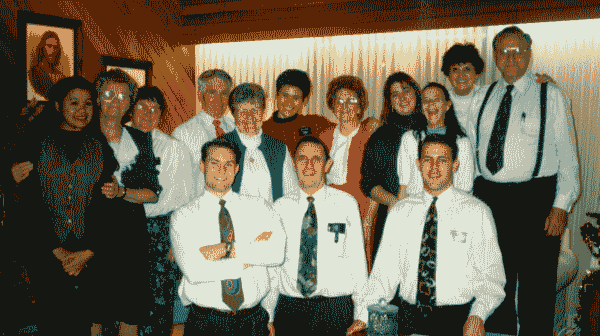 From 1992 to 1995, Heber Kapp, accompanied by his wife, Ardeth, was president of the Canada Vancouver Mission. The Kapps are shown here (back row, on the right), standing beside a group of missionaries in the mission home. (Ardeth Kapp)
From 1992 to 1995, Heber Kapp, accompanied by his wife, Ardeth, was president of the Canada Vancouver Mission. The Kapps are shown here (back row, on the right), standing beside a group of missionaries in the mission home. (Ardeth Kapp)
In 2002, we were called to serve three years as president and matron of my beloved Cardston Alberta Temple. This was a particularly sweet experience for me, having grown up almost within the shadow of this sacred building. How joyful it was to see couples and families sealed together for eternity under the power of the priesthood. For young couples, surrounded by extended families, it was a time of great anticipation as they began their new life together; for many others, after great struggles to get to that point, it was a time of great fulfillment in contemplation of a future life in the family unit.
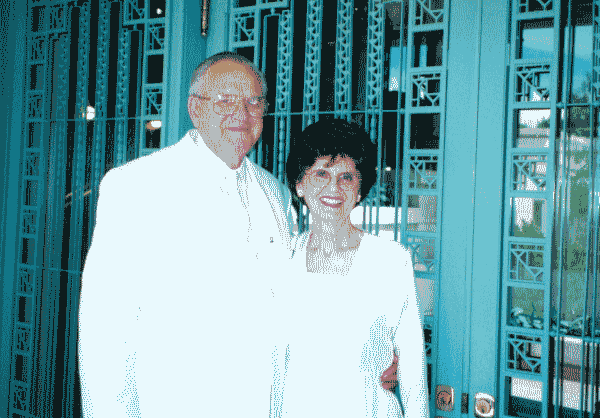 Heber and Ardeth Kapp in front of the Cardston Alberta Temple, in which they served as president and matron from 2002 to 2005. This, Ardeth said, was “the ultimate experience.”[7] (Ardeth Kapp)
Heber and Ardeth Kapp in front of the Cardston Alberta Temple, in which they served as president and matron from 2002 to 2005. This, Ardeth said, was “the ultimate experience.”[7] (Ardeth Kapp)
It is clear that my Canadian identity is at the very heart of my spiritual heritage. The faith and courage of my forebears are intertwined with the growth and development of the Church across Canada, and my own experience travelling around the Church has allowed me to meet many faithful Saints from across Canada and learn of their own stories of faith. This is why I am proud and happy to introduce this new volume on the history of The Church of Jesus Christ of Latter-day Saints in Canada, which explores the history of the Church in every province and territory. This beautifully illustrated book is not only very interesting and informative, but it also enriches and expands our appreciation of the history, from the very beginning of the Church in Canada to our time. To read this book in its historic context is a deep enrichment to one's testimony and underlines the part we each must do to build on the shoulders of those who have gone before.
President Thomas S. Monson defined a “pioneer” as “one who goes before, showing others the way to follow.”[8] We honour and cherish the legacy of those early pioneers who joined the Church in eastern Canada and made the heroic trek overland to join with the Saints in Utah; and still others who came to southern Alberta after 1887 to lay the foundation for the renewed establishment of the Church in Canada. We likewise need to treasure the legacy of more recent Latter-day Saint pioneers in communities across Canada who have gone before and shown the way by joining the Church when it was unknown or unpopular, persevering in holding meetings in homes and rented halls, tirelessly working at fund-raising projects to raise money to build their own meetinghouses, and serving in countless ways to help the Church continue to grow. Many of these Canadian pioneer stories are recorded in the pages of this book.
A very significant factor in the creation of this record of Mormons in Canada is the level of literacy that has prevailed among members of the Church since the earliest days. Education was and continues to be encouraged, and there was specific purpose in keeping diaries and documenting events in detail. How grateful I am that some of my ancestors kept journals. In 1870, my paternal grandfather, Daniel Kent Greene, was given a small blank diary on his twelfth birthday by his father, who instructed him to keep a record. This he did with commendable consistency throughout his life. In 1898, during their five-week journey from Utah to Alberta, both Daniel and his wife, Adeline, wrote each day. Their entries are insightful to read. Daniel expressed optimism with little reference to difficulties, and Adeline wrote of coping with two small children in a wagon. While their recorded journal entries might appear as if they were on different paths, there was never any question of their being united in their purpose and ultimate destination.Having a written record of such stories of faith preserves a priceless heritage. This is why the current volume will be of such value to current and future Canadian Church members. Reading of the lives of individuals and their personal dedication to live the teachings of the gospel of Jesus Christ and to share their knowledge and express their faith to others becomes a fascinating historical record in the effort to establish Zion.
This book is remarkable in weaving together both academic scholarship and the faith story of the Latter-day Saints in Canada. Drawing on the records and experiences of local Church historians across the country, the history is augmented by the archival records of the Church History Library in Salt Lake City, Utah, which include numerous oral history interviews and journals. It contains hundreds of photographs and several excellent maps, charts, and timelines to illustrate the growth and progress of the Church in each region. It also has insightful chapters on themes that have affected Latter-day Saints across the entire country. While the book maintains high academic standards of research and sourcing, it faithfully records the Canadian spiritual heritage, intended to encourage and inspire Church members in Canada, as they continue to build upon the foundation of the faithful Canadian Saints who have gone before. It will be a blessing to thousands.
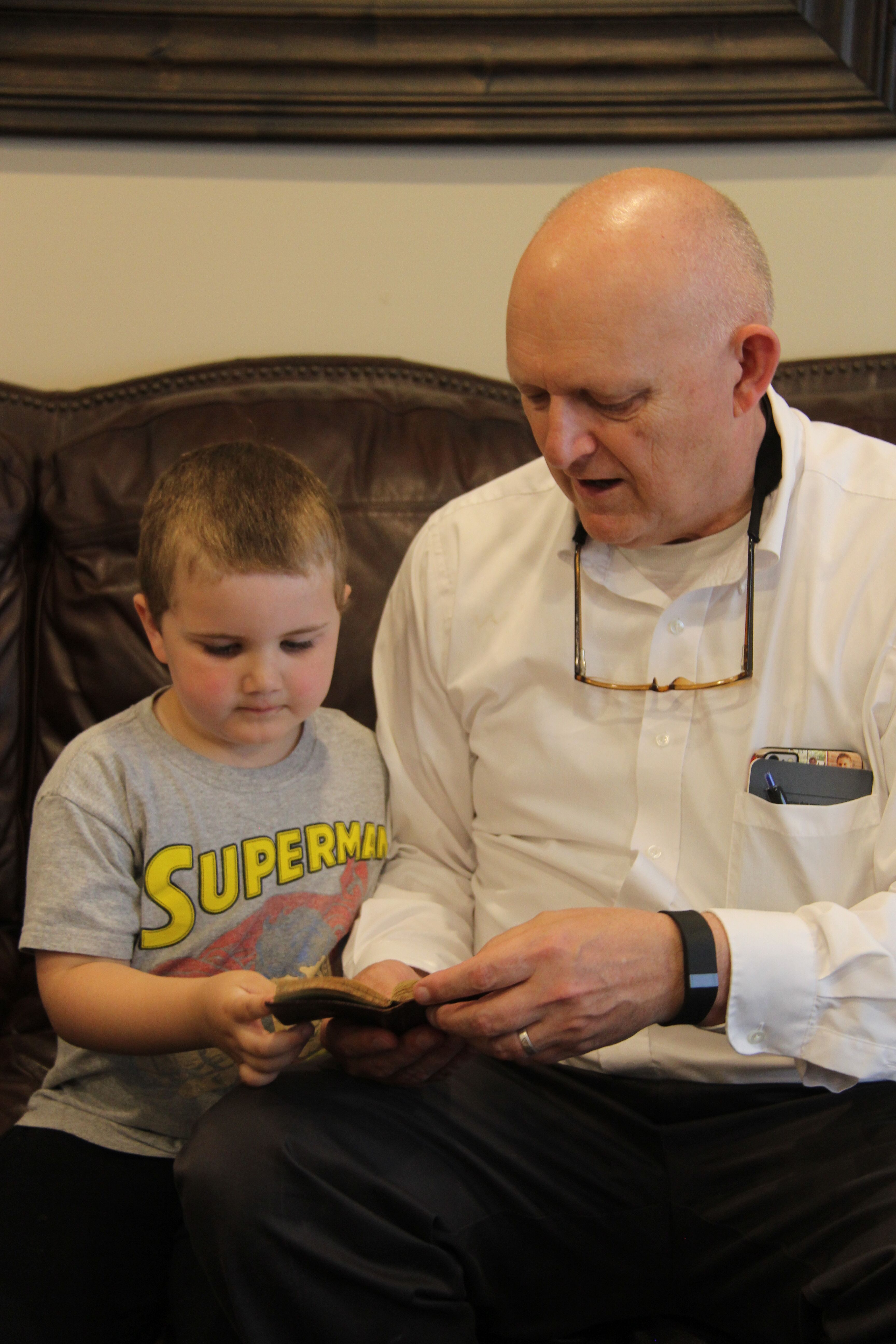 Caption: Grandparents play a key role in sharing their faith heritage with their posterity. In this photo, Tom Matkin, a Cardston resident, is sharing with his grandson, Thomas Pitcher, the journal of Samuel Matkin, Tom’s great-grandfather, who was one of Cardston’s original pioneers. (Tom Matkin)
Caption: Grandparents play a key role in sharing their faith heritage with their posterity. In this photo, Tom Matkin, a Cardston resident, is sharing with his grandson, Thomas Pitcher, the journal of Samuel Matkin, Tom’s great-grandfather, who was one of Cardston’s original pioneers. (Tom Matkin)
What does it mean to be a Mormon in Canada? Those who read this history will gain, as I have, a heightened sense of appreciation and reverence for the strong and unique faith heritage that we share as Canadians. They will broaden their understanding of the challenges faced by Church members in other parts of Canada and will be struck by the many common threads that draw us together. The unfolding history will connect with Church members throughout Canada, whether recent converts or those with generations of Mormon pioneer heritage. It shows the deep power of the gospel of Jesus Christ to improve and transform the lives of Canadians and reveals the hand of the Lord in their lives. It represents a tangible record of our collective faith heritage, one that can be passed on to generations to come, that they too may be “true to the faith that their parents have cherished.”[9]
Notes
[1] Lethbridge Stake, A History of the Mormon Church in Canada (Lethbridge, Alberta: Lethbridge Herald Co., 1968).
[2] Brigham Y. Card, “Charles Ora Card and the Founding of the Mormon Settlements in Southwestern Alberta” in Brigham Y. Card et al, eds., The Mormon Presence in Canada (Edmonton: University of Alberta Press, 1990), 85, 88.
[3] The first sentence of the quotation is the paraphrase of an eleventh century prayer book, which has been handed down through the centuries. (See John Mark Miller, “‘The Love of God’: Medieval Prayer to Modern Hymn,” Artistic Christian, 23 January 2014, https://
[4] Carma T. Prete, ‘We do not doubt our mothers knew it’: Latter-day Saint Pioneers in the Shannon View Saskatchewan Area, 1905-1969 (Salt Lake City, Utah: Digital Legend Press, 2016), viiff.
[5] For details on these experiences, see Anita Thompson, Stand as a Witness: The Biography of Ardeth Greene Kapp (Salt Lake City, Utah: Deseret Book, 2005), 88–127, 263–350.
[6] Don L. Searle, “Priesthood Leaders Worldwide Receive Training via Satellite,” Ensign, April 2003, 76.
[7] Ardeth G. Kapp, interview with Roy A. Prete and Carma T. Prete, 1 July 2016.
[8] Thomas S. Monson, “They Showed the Way,” Ensign, April 1997, 50.
[9] Evan Stephens, “True to the Faith,” Hymns, no. 254.
